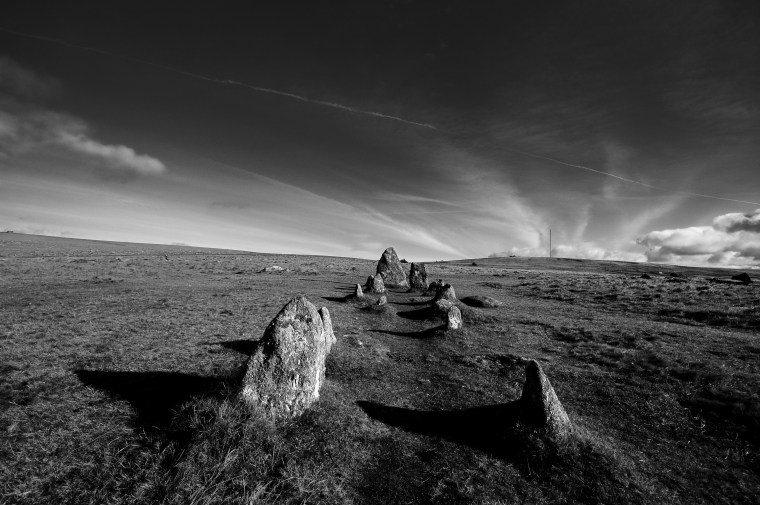Nine megaliths in a remote part of Dartmoor, England, share features in common with Stonehenge, and may shed light on the meaning behind these prehistoric stone monuments, according to a report in the latest issue of British Archaeology.
The Dartmoor megaliths, which were recently carbon-dated to around 3500 B.C., could predate Stonehenge, but both sites feature large standing stones that are aligned to mark the rising of the midsummer sun and the setting of the midwinter sun. Yet another Dartmoor stone monument, called Drizzlecombe, shares the same orientation.
The ancient Brits were not necessarily sun worshippers, however.
Archaeologist Mike Pitts, editor of the journal, told Discovery News that "huge quantities of barbecued juvenile pig bones" were found near Stonehenge, indicating that the animals were born in the spring and killed not far from the site "for pork feasting" in midwinter.
"The general feeling is that the sun was symbolizing or marking the occasion, rather than being the ritual focus itself, so it probably was not sun worship," added Pitts, who is author of the book "Hengeworld" and is one of the leading experts on British megaliths.
This feasting was not just a meaningless pork party, and might have been more akin to a post-funeral wake today.
Pitts believes the "solstice alignment phenomenon perhaps has something to do with death."
As he explains the setting sun and shorter days of winter would have represented the passage into the darkness of the underworld, and the reverse as the days start to lengthen again.
"At Stonehenge," he continued, "the dark navy-colored bluestones may themselves represent ancestors or spirits from the underworld, while the big orangey-pink (before weathering) sarsens could reflect summer and light."
The Dartmoor megaliths, described in a separate study in the current issue of the journal Antiquity, are now lying flat, since the stones in a row fell, or were individually pushed, over. The toppling was fortuitous for historians, however, since peat above and the below the stones permitted the carbon dating, which is extremely rare for such monuments.
Tom Greeves, who discovered the Dartmoor stones at a site called Cut Hill and is co-author of the Antiquity paper, said it is "remarkable that a previously unrecorded stone row with very large stones has been noted for the first time on one of Dartmoor's highest and remotest hills."
He added that to reach their location "requires a walk of about two hours from whatever direction."
A ditched barrow (a mound of earth or stones) exists very close to the Cut Hill stones, providing further evidence that burials and possible death-related rituals might have taken place there.
At least 81 stone monuments have now been discovered nearby, with Cut Hill's being among the largest at over 705 feet in length. Both Greeves and Pitts said it's possible some of the monuments served different functions, such as marking land use zones. The barrows, shared alignment, and other finds, however, indicate several standing stone monuments held ritualistic meaning.
Pitts likened their construction to the building of cathedrals and pyramids, and to the carving of the giant heads on Easter Island.
All, he said, are involved in the "defining of ritual spaces, giving ceremony and power distinctive physical presences, engaging large numbers by employing them in the construction processes, ceremonializing places beyond the mere moment of the rituals."
Pitts hopes that in the near future, archaeologists will carefully place the Cut Hill stones back into their upright positions, to further reveal what the monument looked like when it was first erected.
